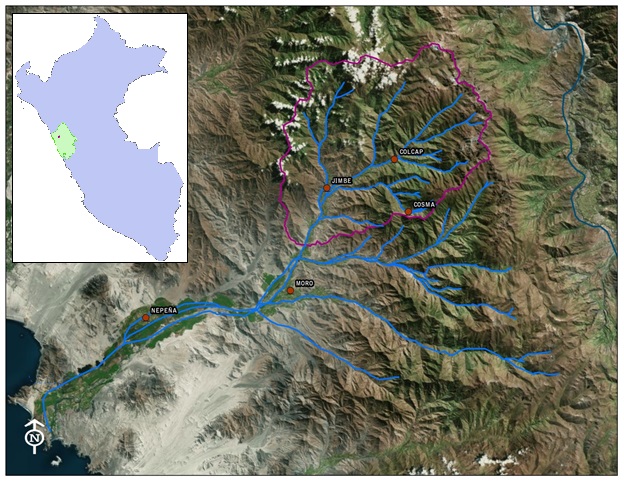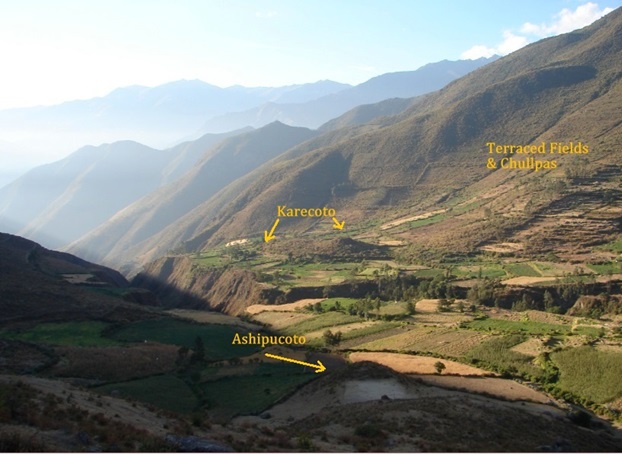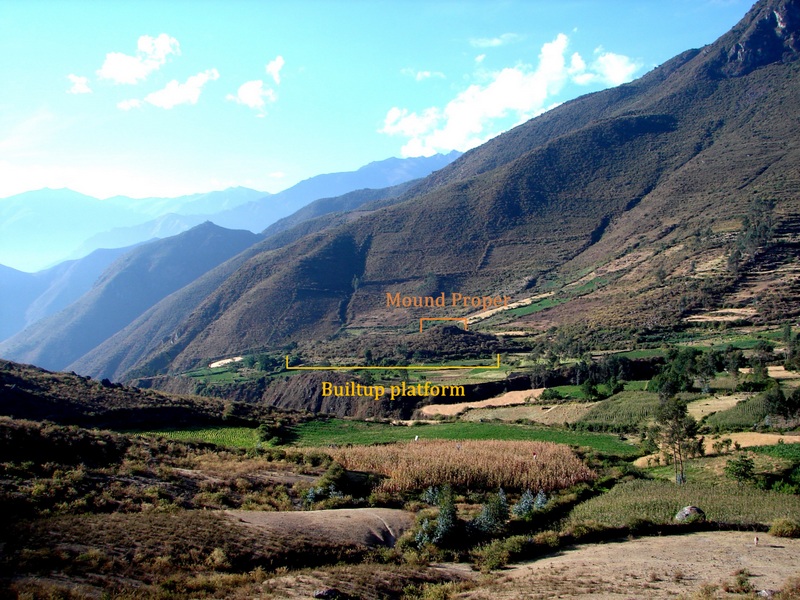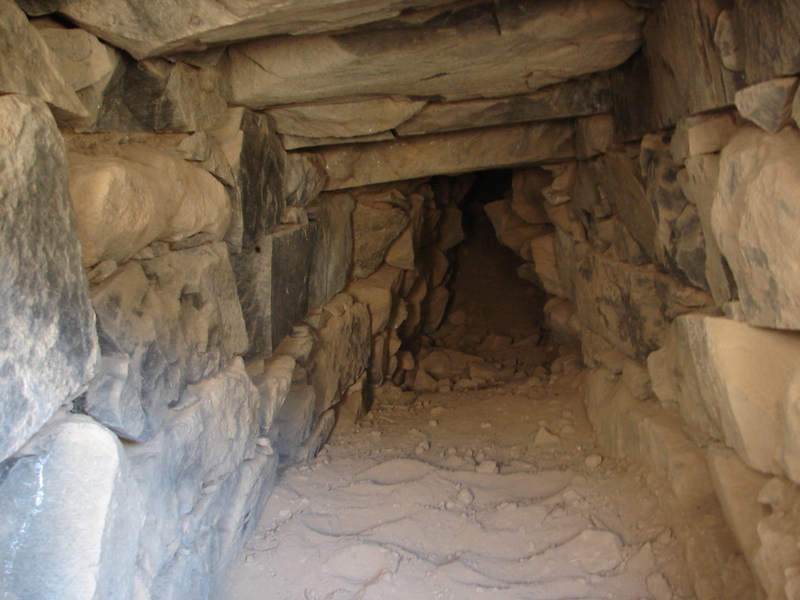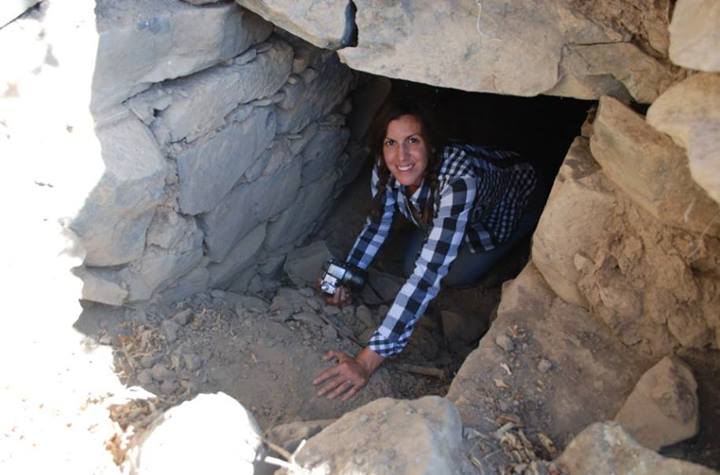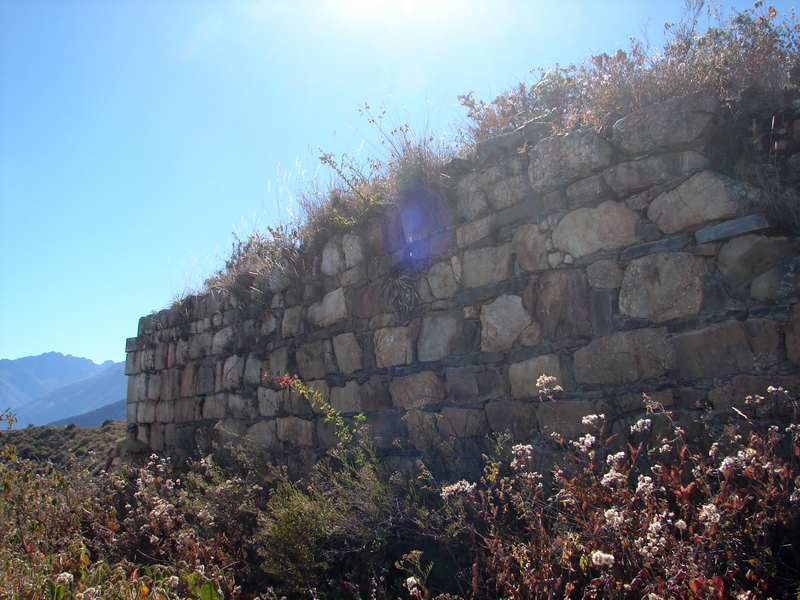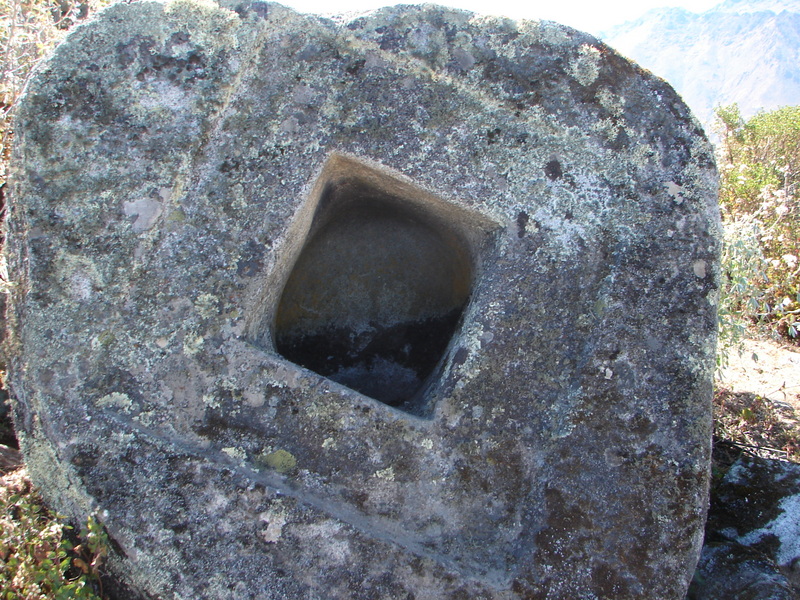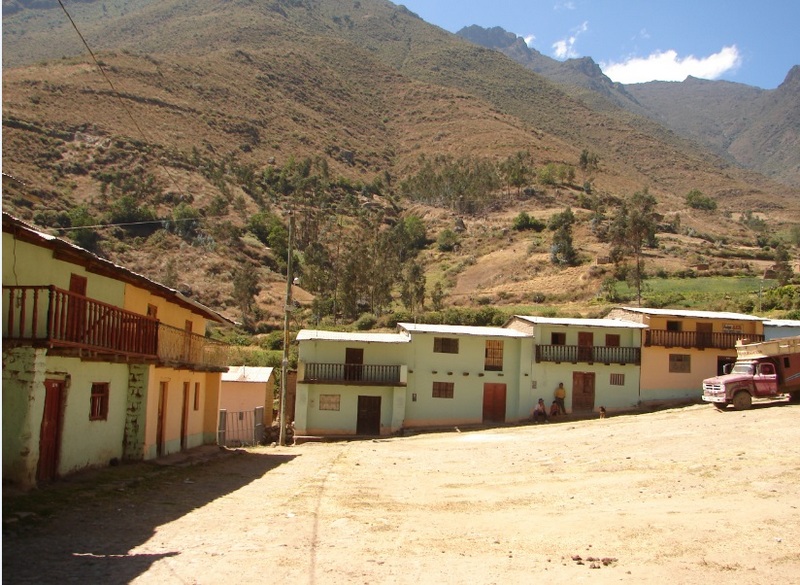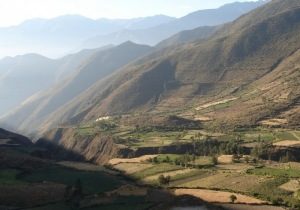
At once both monumental and obscure, it stands within a visually serene yet ruggedly remote setting. Named after its nearby namesake village of Cosma, nestled in the upper Nepeña Valley of central Peru, it is a relatively unexplored complex that includes three human-made mounds thought by archaeologists to be nearly 3,000 years old. During the summer of 2014, it will become a destination for a small team of archaeologists and students who will, for the first time, begin serious archaeological excavations at the site.
Until now, it has attracted little attention from the scholarly community. But Andean archaeologist Kimberly Munro, who is also a PhD student with Louisiana State University, hopes to change that.
“I was revisiting prehistoric sites in the upper Nepeña Valley originally surveyed by Richard Daggett and Donald Proulx in the 1970s,” says Munro. “These sites were mostly ridge-top occupations and based on Daggett’s report, showed evidence of highland-coastal interaction; a topic of interest for me for my own dissertation research.”
A local school principal from the town of Salitre clued her in to a “large Inca site and a hilltop fortress known as Iglesia Hirca” near Cosma. On the way with some of her archaeological crew to investigate the tip, one site in particular caught Munro’s eye. “There is no public transport up the mountain to the town of Cosma, so we had to hitch a ride with the delivery truck that goes up once a week with the community’s supplies,” she said. “We were riding up on the top of the truck and when it took that last bend in the road before Cosma, I caught a glimpse of Karecoto [the local name of a large mound] for the first time – and honestly couldn’t believe what I was seeing. I knew it wasn’t natural, or Inca, and its massive size and composition was reminiscent of [ancient Peruvian] highland centers. Even though we were in the upper reaches of the coastal valley, we were still in a coastal valley, and this was something different from what we had seen throughout the rest of Nepeña.”
What Munro was looking at was actually one of several ancient sites that, together, bespoke a possible associated complex of structures with beginnings at least during ancient Peru’s “Early Horizon” period (900 – 1 BCE). She knew this after her inspection of the mounds and survey of surface ceramics and other finds at the sites: “From the density of the ceramics, and the different archaeological components I believe Cosma has been continuously occupied since at least the Early Horizon.”
The largest of the three mounds in the complex, Karecoto, is about 250 meters long and 70 meters wide, and features an underground gallery and truncated top. The top is flat, and Munro describes its location as including walls and domestic structures surrounded by what appear to be prehistoric canals. About 600 meters south of the large mound and across a ravine is a smaller mound, known as Ashipucoto, featuring signs of exposed architecture at its top due to looting. Above Ashipucoto to the south is a ridgeline that supports what is interpreted as the domestic area of the site and, following the ridgeline about 1,000 meters up is an Inca occupation known as Caja Rumi, which features large boulders, more ancient terraces, and more domestic walls and architecture. Finally, perched atop an opposite ridge overlooking Karecoto and the village of Cosma is the third mound, and Iglesia Hirca, the hilltop fortress. All three mounds, excluding the Inca occupation, are tentatively dated by Munro to the Early Horizon Period.
_____________________________
The Nepeña river, Nepeña valley, and the Cosma location (right of center) in this image, with map inset showing Cosma location within the Caceres District, Department of Ancash, central Peru. Image credit Kimberly Munro.
______________________________
The Karecoto and Ashipucoto mounds labeled within the research area. Photo credit Kimberly Munro.
______________________________
Photo illustrating the mound portion and the built-up platform. Photo credit Kimberly Munro.
_______________________________________
Interior of the Karecoto structure gallery. Photo credit Kimbery Munro.
____________________________
Project Director Kimberly Munro explores the gallery (tunnel). Said Munro: “Exploring the gallery was surreal. It was clearly looted and cleaned out to be exposed within the mound like that….but it was obvious no one had been inside in some time. I was already overwhelmed by the size of the mound looming before us, but I wasn’t prepared to see the exposed tunnel……” Photo credit David Chicoine.
_______________________________
Wall remains of Iglesia Hirca, the hilltop fortress. Photo credit Kimberly Munro.
_______________________________
Carved boulder at Caja Rumi. Photo credit Kimberly Munro.
_______________________________
For Munro, the site complex holds enormous potential for shedding light on the social, cultural, and economic/trade interactions of the ancient communities that dotted the regions between the coastal communities and those of the highlands. “For those studying interactions,” says Munro, “many people have looked at opposite ends of the interaction spectrum, either the highlands, or the coast. Not as many have looked at these in-between zones, or buffer communities. The hilltop fortress is reminiscent as well of the monumental sites found in the Moro pocket, lower down in the upper-Nepeña Valley. Chullpas and the Inca carved stones also date us to the Middle and Late Horizons, respectively. It appears we may have a full sequence, and being able to understand how these people plugged into the changing networks or big power players through time will be an important research question for the excavations.”
To find the answers, Munro will be co-directing an initial research team with Jeisen Navarro Vega of the Registro Nacional de Arqueologos del Peru (RNA) to conduct test excavations at the Karecoto and Ashipucoto mounds and a ridge-top site, along with total station mapping of the overall Cosma site complex. The effort won’t be easy. There is no public transportation to the site. To get there, one must catch a ride on a once-a-week delivery truck, or hike 5 hours from the next closest town of Jimbe. This presents a logistical challenge for packing in tools or supplies. Secondly, components of the site are situated on high ridge-tops about 1,000 meters above Cosma, and the sites of Iglesia Hirca and Caja Rumi alone are a three-hour hike from the town. Moreover, the sites are overgrown with trees, bushes, and tall cacti, requiring the team to first clear the vegetation before mapping and excavations can begin.
Another challenge will be related to the community of Cosma, itself. There is electricity, but no running water. The team will need to find ways to maintain an adequate amount of drinking water and, in the longer term, build showers and latrines.
“I also question how the project and our presence will fit into the community dynamics,” Munro worries. “Cosma is very small and community oriented, and I hope our presence does not disrupt the current dynamics and relationships in Cosma. These people do not have individual property rights, everything is communally owned and managed. I am curious to see how everyone manages and reacts with us living and working in Cosma.”
______________________________
The town of Cosma, with the Cordillera Negra mountains in the background. The town has early 18th century Spanish colonial origins. It is listed by the district municipality as being “the oldest town in the department of Ancash.” Photo credit Kimberly Munro.
______________________________
Currently the project is accepting donations to help launch the project efforts. These donations will also help establish community infrastructure projects such as building communal bathrooms and showers. There is a donation page and link on the project website: http://padcaperu.wordpress.com/ The project is also accepting applications from individuals who are interested in participating in the excavations and mapping. Questions about donations or the upcoming project work should be directed to [email protected].
____________________________________
Read about the most fascinating discoveries with a premium subscription to Popular Archaeology Magazine. Find out what Popular Archaeology Magazine is all about. AND MORE:
 On the go? Purchase the mobile version of the current issue of Popular Archaeology Magazine here for only $2.99.
On the go? Purchase the mobile version of the current issue of Popular Archaeology Magazine here for only $2.99.
And, Popular Archaeology’s annual Discovery edition is a selection of the best stories published in Popular Archaeology Magazine in past issues, with an emphasis on some of the most significant, groundbreaking, or fascinating discoveries in the fields of archaeology and paleoanthropology and related fields. At least some of the articles have been updated or revised specifically for the Discovery edition. We can confidently say that there is no other single issue of an archaeology-related magazine, paper print or online, that contains as much major feature article content as this one. The latest issue, volume 2, has just been released. Go to the Discovery edition page for more information.
Subscription Price: A very affordable $5.75 for those who are not already premium subscribers of Popular Archaeology Magazine (It is FREE for premium subscribers to Popular Archaeology). Premium subscribers should email [email protected] and request the special coupon code. Or, for the e-Book version, it can be purchased for only $3.99 at Amazon.com.

